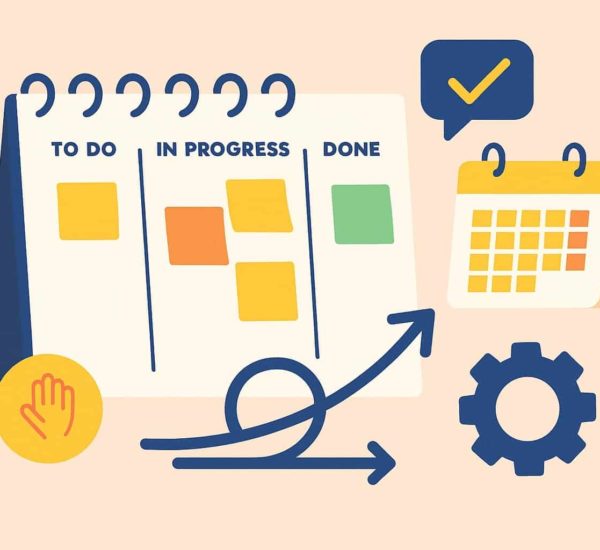When an employee decides to leave a company, it’s essential to have an effective offboarding process in place. Offboarding is more than just collecting a badge and a laptop; it’s a crucial component of an organization’s talent management strategy. By conducting offboarding correctly, companies can protect their interests, ensure a smooth transition, and maintain positive relationships with departing employees.
In this blog, we’ll discuss what offboarding is and provide tips for developing an effective offboarding process. Whether you’re an HR professional, manager, or business owner, this blog will provide valuable insights into how to handle the offboarding process professionally and efficiently.
What is Offboarding?
Offboarding is the process of managing an employee’s departure from a company. It encompasses taking necessary steps and procedures to ensure that the departing employee leaves the company in a professional and respectful manner. Offboarding typically involves tasks such as returning company property, completing any outstanding work, providing feedback, and revoking the employee’s access to company systems.
The goal of offboarding is to ensure a smooth transition for both the employee and the company and to protect the company’s interests. It also provides an opportunity for the organization to gather feedback from departing employees to identify areas for improvement.
To learn more about the offboarding process read our Comprehensive Guide to Employee Offboarding.
7 Tips for an Effective Offboarding
Start Planning Early
It’s essential to communicate effectively with the departing employee and their team. Starting the offboarding process early allows ample time for communication to take place. This includes notifying the team of the employee’s departure, arranging farewell gatherings, and ensuring that any questions or concerns are addressed.
More importantly, an employee’s last day is normally reserved for farewell parties, tearful goodbyes, and gifts. This is why the offboarding process should start well before the employee’s last day.
Starting the offboarding process early allows HR and managers to plan effectively for the employee’s departure. They can make sure that everything is in place to ensure a smooth transition and that all necessary paperwork, such as exit interviews and final pay, is completed on time.
Overall, starting the offboarding process early allows for a more organized, efficient, and positive departure for both the employee and the organization. It ensures that all necessary steps are taken to protect the company’s interests and maintain good relationships with departing employees.

Communicate Clearly
Make sure that you communicate clearly with the exiting employee about what is expected of them during the offboarding process. This includes returning any company property, completing the necessary paperwork, and informing their team about their departure. If they have a client-facing role, they also need to create a plan of action for notifying their clients and managing handoffs.
Human Resources needs to make sure that the exiting employee feels comfortable and confident while also protecting the interests of the company.
Conduct an Exit Interview
Most employees eventually quit. Some may do so because of personal issues, things at work, or because they have found more growth opportunities. But finding out if there was a way to prevent attrition is one of the key aspects for HR professionals. In order to do that, an exit management process that includes an exit interview is crucial.
An exit interview is a great way to gather feedback from departing employees. This can help you identify areas for improvement and make changes to ensure that future employees have a better experience.
Exit interviews are an essential tool for organizations to gather feedback from departing employees, identify areas for improvement, and take steps to retain valuable employees. By conducting exit interviews effectively, the organization can maintain positive relationships with departing employees and protect its interests.
Take exit interviews with a pinch of salt. Not all employees may be entirely truthful. This may be due to bad experiences with management or just an overall assumption that nothing will ever change. But wherever possible, HR professionals should create actionable takeaways from exit interviews and implement them.
Have a Plan in Place for Knowledge Transfer (Tribal or Otherwise)
We live in fast-paced times. The employees do not have to stay at a place for decades to build up a knowledge base. Even an employee who has worked at the organization for a couple of years creates a unique bank of critical information that is important for the growth of the business.
It is important to get a hold of this knowledge before the employee moves on from the organization. The employee’s expertise can encompass the relationships they fostered within and outside the organization, the training provided to their replacement, and the roadmaps of the projects they leave behind.
Make sure that there is a plan in place for transferring the exiting employee’s knowledge to other team members. This will help ensure that critical information is not lost when the employee leaves.
Protect your Organization
Make sure that you have a plan in place to protect your organization’s interests. This may include revoking access to company systems, retrieving any company property, and ensuring that the exiting employee does not take any confidential information with them.
Remind the exiting employee of any confidentiality or non-disclosure agreements they signed during their employment and emphasize that they are still obligated to abide by these agreements even after they leave.
The company should update its internal documentation, such as contact lists, org charts, and workflows, to reflect the departing employee’s departure. This ensures that other employees have up-to-date information about who to contact and what to do in the employee’s absence.

Offer Support and Stress-Free Exit
Leaving a job can be a stressful time for employees. Some employees being offboarded will not leave by their own choice. For this who don’t have a choice, make sure that the business offers support. This can include assistance with job searches and resume writing.
For those who have consciously made the decision to leave, be sure to provide an easy exit where they have a positive impression of the company. Be sure that the doors of the company are always open and they can always come back as boomerang employees.
When a former employee rejoins the company, it is clear that they enjoyed working at this one better than the competition. In that case, current employees may be more likely to question their own reasons for looking to shift which can actually improve employee retention.
Celebrate their Contributions
Take the time to celebrate the exiting employee’s contributions to the organization. This can help ensure that they leave on a positive note and encourage them to speak positively about the organization in the future. Some ways to celebrate their contributions are:
- Host a farewell party: The company can host a farewell party to celebrate the employee’s achievements and contributions. The party can include speeches, presentations, and gifts to show appreciation.
- Write a letter of appreciation: The company can write a letter of appreciation for the employee, highlighting their achievements and contributions to the organization.
- Share achievements on social media: The company can share the employee’s achievements on social media, such as LinkedIn. This can also help the employee build their personal brand while also showcasing the company culture.
- Provide a positive reference: The company can designate a team member to act as a reference for the exiting employee. Providing a positive reference to the employee can be helpful in their future job search.
Conclusion
It is important for companies to have an effective offboarding process in place; to ensure a smooth transition for the employee and to protect the company’s interests.
In this blog, we have discussed seven tips for an effective offboarding process. Companies can ensure that the offboarding process is efficient, professional, and respectful to both the employee and the organization.
What if you could use a tool to streamline offboarding?
AttendanceBot can manage the offboarding process of employees from a company. It can automate and streamline routine tasks such as checklist creation, updating the org chart, exit interviews and company-wide notifications.





